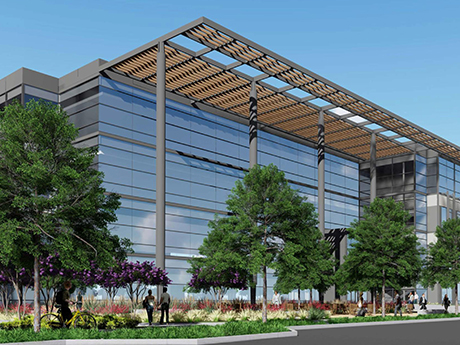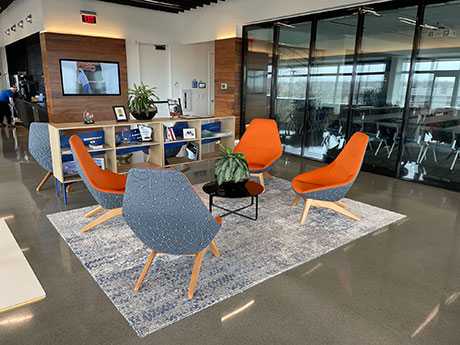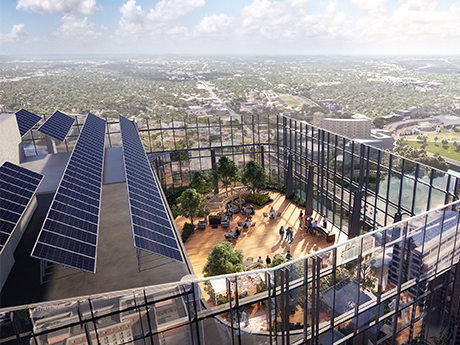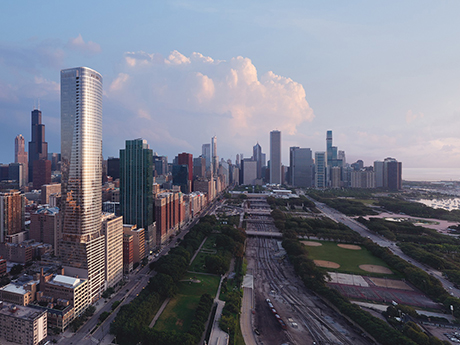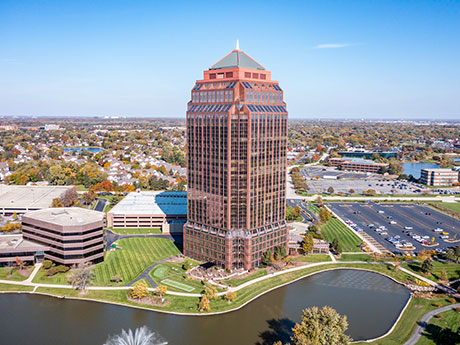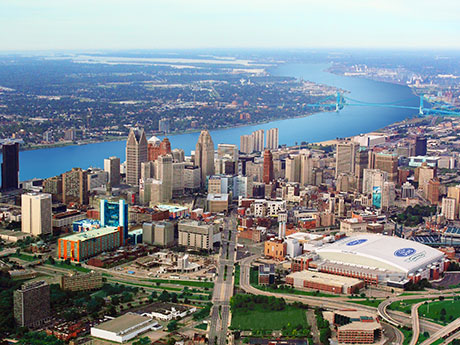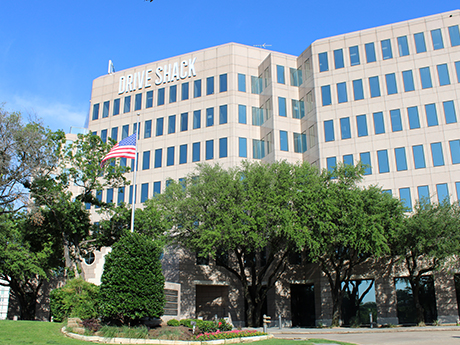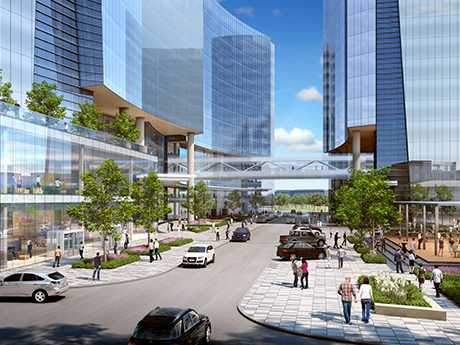By Marshall Mays, vice president, Colliers Dallas-Fort Worth (DFW) is a hot market for commercial real estate right now, with people from across the country relocating to the area every day. The metroplex’s population is growing at an annual rate that rivals those of other top U.S. markets, including Austin, its neighbor to the south that is often considered to be a more glamorous city. With the increasing number of businesses relocating to Texas and more offices opening back up, the urban core of Fort Worth has become a particularly popular destination for industry growth in Texas. The Market Today The performance of Fort Worth’s office market has been particularly encouraging since the start of 2021. Overall, the city’s office vacancy rate currently stands at 13.3 percent, down from a pandemic-era high of 14 percent in the third quarter of 2020. This positive trend is aided by a quicker “return to office” in DFW. According to research from Kastle Systems, a security company that provides access control systems for office buildings around the globe, Texas as a whole has outpaced major cities and other states in terms of the speed and degree to which office occupancy rates have been recouped. …
Office
It’s safe to say office space design has been transformed over the past two years in large part due to COVID-19 and the work-from-home experience. It has changed for now, the foreseeable future and maybe forever. Though many people are still working from home, others have returned to the office, even if only for a few days a week, and many of the office spaces are looking entirely different. While this may be happening in other markets, it is a trend we are seeing in the Milwaukee office market. The idea of the design and aesthetic of the office has changed. Current trends in office design are focusing on safety and comfort, while also creating a sense of home at the office. Tenants are being more thoughtful about their space layout and design. Instead of trying to fit as many people as possible into the space, tenants are occupying roughly the same size, or even slightly smaller spaces, but focusing on making those spaces more welcoming to help ease those workers coming back into the office, as well as recruiting new employees. Bring home into the office This design trend has the goal to provide comfort and safety at every …
Interviews by Taylor Williams The office markets of the major Texas cities have always been birds of different feathers, built to accommodate drastically different types of users and disproportionately subject to broader swings in occupancy and rent growth. Dallas-Fort Worth (DFW) remains the king of corporate relocations and regional consolidations, and the metroplex’s office market benefits from the highest degree of diversity among users, an attribute that has ushered it through the darkest days of the COVID-19 pandemic. Meanwhile, the Houston office market, hobbled for years by its reliance on energy users, may finally be poised to see some growth in occupancy as prices of these commodities head for the moon. In Austin, the non-California tech capital of the country, the supply of office space is still playing catch-up to demand, as evidenced by the healthy rents these buildings have achieved during the state capital’s ascendance to major-market status. And San Antonio? Like most commercial asset classes in the Alamo City, the performance of the office sector is steady, offering neither the glamorous appeal of trophy buildings with marquee users that attract institutional investors nor the profound cyclical dips that scare them away. Yet after two years of prolonged disruption …
There was a time when an investment in the Columbus, Ohio commercial real estate market had to be justified to outsiders and required a higher return to attract investors. After all, it sits squarely in “fly-over country” in the heart of the rust belt. With the exception of getting a superior return, why would an investor choose Columbus, over say, New York or Chicago? But that’s all changed. Cap rates are now as low as, or lower than, other major markets. Investors have been driven to those markets, despite having a lower cap rate, because they knew rent growth was continuous and the sales price would appreciate over time. For decades, Columbus’ sales prices had remained stagnant due to a lack of increase in lease rates. However, over the past two years, lease rates have been rapidly increasing in the industrial market, and projections expect that trend to continue. The Columbus office market hasn’t seen the same rental appreciation — yet. But projections indicate that there will be rental appreciation in office as well, mostly due to increased demand and lack of speculative development over the past two years, but also due to rising land and construction costs. Because of …
When it comes to which office properties will succeed in the coming years, success may boil down in part to who is minding the store. Like most big cities, Chicago’s office market has been tested by the pandemic, and office property owners face a far more competitive environment. Year-end 2021 office vacancy rates were nearly 18 percent in the central business district (CBD) and over 25 percent in the suburbs, or 44 percent and 35 percent higher, respectively, than two years prior, according to NAI Hiffman research. Hybrid work is here to stay, and some employers are shrinking or shifting their office footprints. When the pandemic is finally in the rearview mirror, office demand is not going to be the same as it was a couple of years ago, although we are still figuring out just what it will be. Which office properties survive and thrive in post-pandemic Chicago and nationwide will depend on many factors, including the property’s age or condition, its location and, increasingly, how well the property is programmed and run. That includes satisfying tenants in terms of everything from air quality to event assistance; meeting lenders’ environmental, social and governance (ESG) requirements and other new demands; …
By Cecilia Hyun, Siegel Jennings Co. Since early 2020, the COVID-19 pandemic has upended lives and disrupted the normal course of businesses, including those in the commercial real estate market. As in many other sectors, however, this public health crisis has not affected all commercial properties equally. Real estate occupied by essential businesses such as grocery stores, sellers of household goods and warehouse clubs, for example, have weathered the pandemic well. A few have even increased their market share. By contrast, many office buildings, hospitality and non-essential retail properties have suffered severely. Taxing jurisdictions and assessors have responded to the crisis with varying degrees of success. The Ohio Legislature passed special legislation (spearheaded by Siegel Jennings Managing Partner Kieran Jennings) to allow a onetime, 2020 tax year valuation complaint for a valuation date of Oct. 1, 2020, since the usual tax lien date of Jan. 1 would not have shown the effects of COVID. Other assessors applied limited reduction factors to account for the sudden pandemic-induced decrease in property values. As values recover, it is important for taxpayers to monitor still unfolding consequences as they review their property tax assessments. Initially, hotels and experiential property uses suffered the steepest losses …
A lot has changed in the world since the beginning days of the COVID-19 pandemic in early 2020. Fast forward to November 2021 and the world is a very different place. Over 46 million people have been infected in the United States alone with over 750,000 deaths officially attributed to the virus. Most businesses have been forced to shut down in-person work for some period of time and many have instituted remote work programs until the beginning of 2022. The real question on everyone’s mind is when will we return to normal and more specifically, what will the new normal look like? Although we will most certainly have to deal with the aftereffects of COVID-19 and any variants that surface, there is light at the end of the tunnel. To date, approximately 427 million doses of the vaccine have been administered with over 192 million people fully vaccinated. Recently, Pfizer announced that it has developed an easy-to-administer COVID-19 pill, which when used in combination with a widely used HIV drug, can cut the risk of hospitalizations or death by 89 percent in high-risk adults who have been exposed to the virus. Given the combination of vaccinations, natural immunity for those …
By Mike Otillio, research director, Colliers The Dallas office market and North Texas region as a whole continue to evolve as leading destinations for corporate relocations, led in part by a favorable business climate. This reputation as a top landing spot for regional workforce consolidations and outright relocations from other states has helped Dallas become a national leader in some key back-to-work metrics. According to research from security firm Kastle Systems, which monitors keycard, fob and app usage within thousands of office buildings across the country, the average occupancy rate in December across 10 of the country’s biggest markets was 40.6 percent. Dallas was one of the 10 markets tracked in the report, posting an above-average occupancy rate of 52.3 percent. The basic business-friendly climate and healthy pace of job and population growth, along with evidence that users are making stronger pushes to return to their workspaces, have accelerated the market’s office investment sales recovery for value-add, core-plus and stabilized product. Barring any unforeseen circumstances, such as a prolonged spike in cases from the Omicron variant, we expect this trend to continue through 2022. Dallas recorded several notable sales of iconic office assets in 2021, plus numerous deals for suburban …
By Taylor Williams Office owners in Texas remain acutely aware of how the pandemic has changed the game and are not shying away from promoting health and wellness within their buildings. According to data from security firm Kastle Systems, which tracks keycard, fob and app access to some 2,600 office buildings across 138 cities and 47 states, office space in America’s largest markets continues to be underutilized. Across the 10 markets that Kastle Systems tracks, including Austin, Houston and Dallas, the average office occupancy rate in early December was 40.6 percent. Yet the three Texas markets all registered occupancy rates considerably above the national average — 59.3 percent, 54.9 percent and 52.3 percent, respectively — for Austin, Houston and Dallas. A more temperate climate in Texas could bear some responsibility for these above-average performances, given that access to functional outdoor spaces has undeniably become a key tenant demand during the pandemic. Along those lines, tenants have understood for some time now that successfully bringing their employees back to their offices is somewhat contingent on making sure those workers feel safe on the job. The onus, therefore, has fallen on office owners to ensure that their buildings have protocols through which …
By Blake Virgilio, SIOR, CCIM, vice president at Colliers The Houston office market continued its very gradual stabilization with 27,000 square feet of positive absorption in the third quarter. While that volume of absorption only represents roughly one floor of office space in a typical Houston office building, it’s the first time the market has posted a quarter of positive net absorption in the last two years. The key activities of tenant tours and the return of employees to the office continued to increase throughout the third quarter. Nonetheless, the vacancy rate rose over the course of the quarter by 400 basis points from 22.9 to 23.3 percent, a historical high. Also in the most recent quarter, Houston’s office inventory increased slightly, with approximately 1 million square feet of new product added. There is still 3.2 million square feet of office space under construction, and most of the new inventory, which is 47 percent preleased, is expected to deliver this year. Of that total new product, about 2.3 million square feet is spec development, of which 60 percent is preleased. Houston has one of the highest physical office occupancy rates in the country, though many larger corporations began phasing their …


